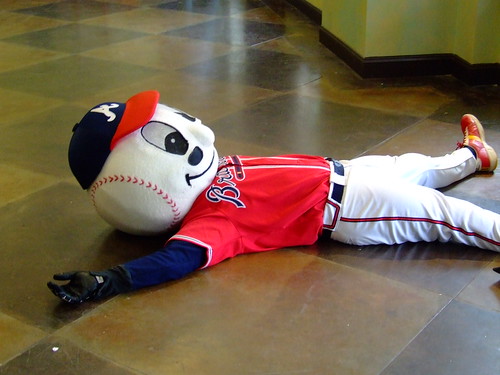At long last, I have my report from the ODAC baseball tournament. W&L’s pennant is their first ever and will also result in their first-ever trip to the NCAA playoffs. They’ll return to action May 13 in
Rest? Who needs to rest in the playoffs?
There were many standouts during the five games of course, but pitchers Brendan Clark and Chuck Davidson deserve special mention. The two gentlemen pitched a combined 24.1 innings (out of a possible 45). They allowed ZERO earned runs and only two earned runs. Davidson pitched 8 innings on one day’s rest in the semifinal, allowing only 1 unearned run on four hits. He even told the coached he wanted to pitch in the final, though thankfully they wouldn’t let him. Davidson’s secrets were simple: avoid walking people, throw your fastball on the corners with consistency and use a good slider for strikeouts.
Ah yes, the mantra for successful hitting: “I swung as hard as I could.”
The title game
By Sunday afternoon’s championship game, both W&L and opponent Virginia Wesleyan were nearly out of pitching. Both teams had already played four games in as many days, and the title match would be game five. W&L trotted out Andrew Henderson, a senior who’d had a tough season, losing his DH job and then his spot in the pitching rotation. His ERA was an unsightly 7.20. He’d been lit up on Friday in W&L’s only tournament loss, throwing a disastrous relief stint where he couldn’t hit the strike zone. So we were a bit concerned about what might happen.
When you start a pitcher with a 7.20 ERA you’re just hoping for one or two decent innings.
What’s next
I don’t know if what will happen at the regionals. W&L could go 0-2 and be back home in 48 hours. But in 2005 Hampden-Sydney – the number six seed in the ODAC – won the conference tournament and the regional, advancing all the way to the D-III World Series. W&L in 2009 was the number six seed in the ODAC. Could fate repeat itself? Here’s what I do know: If Davidson and Clark continue to throw strikes and mow down batters, W&L will be a scary team at regionals. If surprising standouts like Andrew Henderson suddenly emerge, who knows what can happen?







